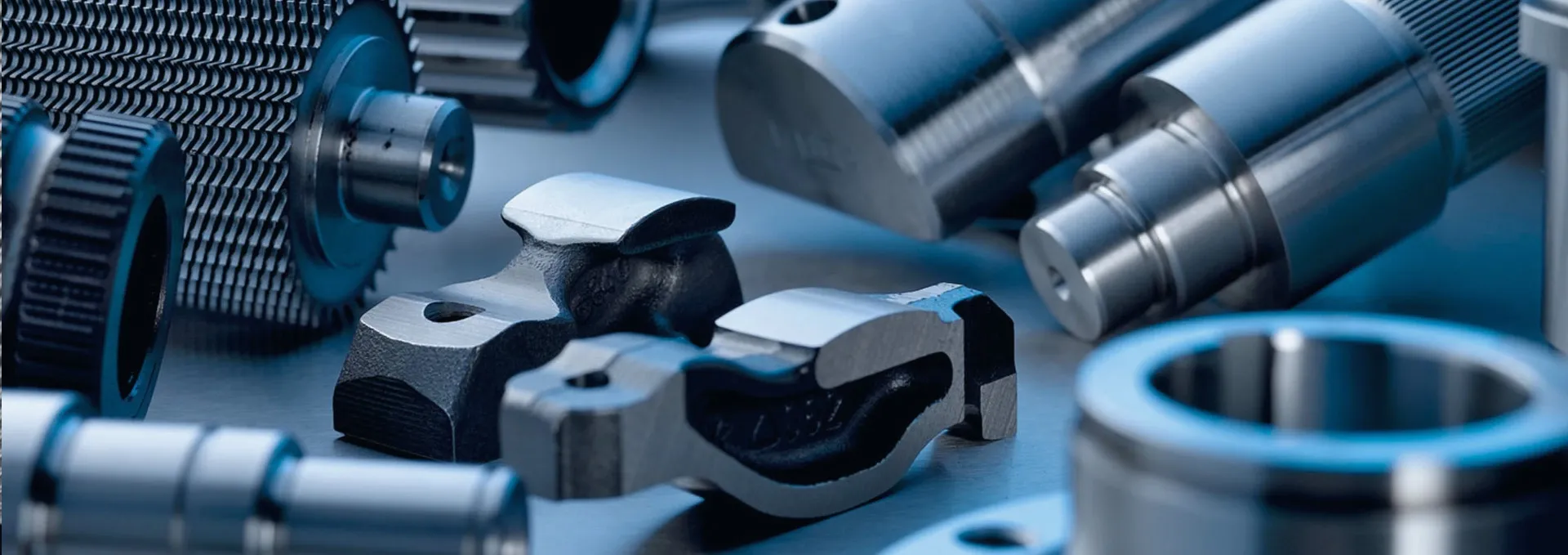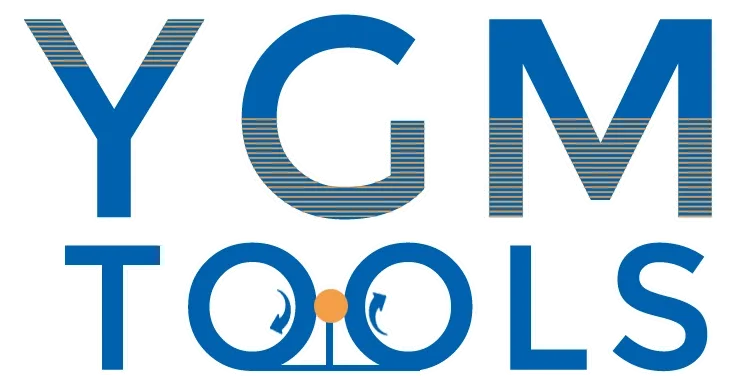
-
 Afrikaans
Afrikaans -
 Albanian
Albanian -
 Amharic
Amharic -
 Arabic
Arabic -
 Armenian
Armenian -
 Azerbaijani
Azerbaijani -
 Basque
Basque -
 Belarusian
Belarusian -
 Bengali
Bengali -
 Bosnian
Bosnian -
 Bulgarian
Bulgarian -
 Catalan
Catalan -
 Cebuano
Cebuano -
 Corsican
Corsican -
 Croatian
Croatian -
 Czech
Czech -
 Danish
Danish -
 Dutch
Dutch -
 English
English -
 Esperanto
Esperanto -
 Estonian
Estonian -
 Finnish
Finnish -
 French
French -
 Frisian
Frisian -
 Galician
Galician -
 Georgian
Georgian -
 German
German -
 Greek
Greek -
 Gujarati
Gujarati -
 Haitian Creole
Haitian Creole -
 hausa
hausa -
 hawaiian
hawaiian -
 Hebrew
Hebrew -
 Hindi
Hindi -
 Miao
Miao -
 Hungarian
Hungarian -
 Icelandic
Icelandic -
 igbo
igbo -
 Indonesian
Indonesian -
 irish
irish -
 Italian
Italian -
 Japanese
Japanese -
 Javanese
Javanese -
 Kannada
Kannada -
 kazakh
kazakh -
 Khmer
Khmer -
 Rwandese
Rwandese -
 Korean
Korean -
 Kurdish
Kurdish -
 Kyrgyz
Kyrgyz -
 Lao
Lao -
 Latin
Latin -
 Latvian
Latvian -
 Lithuanian
Lithuanian -
 Luxembourgish
Luxembourgish -
 Macedonian
Macedonian -
 Malgashi
Malgashi -
 Malay
Malay -
 Malayalam
Malayalam -
 Maltese
Maltese -
 Maori
Maori -
 Marathi
Marathi -
 Mongolian
Mongolian -
 Myanmar
Myanmar -
 Nepali
Nepali -
 Norwegian
Norwegian -
 Norwegian
Norwegian -
 Occitan
Occitan -
 Pashto
Pashto -
 Persian
Persian -
 Polish
Polish -
 Portuguese
Portuguese -
 Punjabi
Punjabi -
 Romanian
Romanian -
 Russian
Russian -
 Samoan
Samoan -
 Scottish Gaelic
Scottish Gaelic -
 Serbian
Serbian -
 Sesotho
Sesotho -
 Shona
Shona -
 Sindhi
Sindhi -
 Sinhala
Sinhala -
 Slovak
Slovak -
 Slovenian
Slovenian -
 Somali
Somali -
 Spanish
Spanish -
 Sundanese
Sundanese -
 Swahili
Swahili -
 Swedish
Swedish -
 Tagalog
Tagalog -
 Tajik
Tajik -
 Tamil
Tamil -
 Tatar
Tatar -
 Telugu
Telugu -
 Thai
Thai -
 Turkish
Turkish -
 Turkmen
Turkmen -
 Ukrainian
Ukrainian -
 Urdu
Urdu -
 Uighur
Uighur -
 Uzbek
Uzbek -
 Vietnamese
Vietnamese -
 Welsh
Welsh -
 Bantu
Bantu -
 Yiddish
Yiddish -
 Yoruba
Yoruba -
 Zulu
Zulu
High-Performance Roll Thread Machines for Steel Bars
In the realm of modern manufacturing and construction, the demand for high-strength, precision-threaded components is ever-increasing. At the heart of meeting this demand lies the sophisticated roll thread machine, a cornerstone technology that transforms raw materials into critical structural and mechanical elements. Unlike traditional thread cutting, which removes material, thread rolling is a cold-forming process that plastically deforms the material into the desired thread profile. This not only conserves material but fundamentally enhances the mechanical properties of the threaded part, leading to superior fatigue resistance and tensile strength. This comprehensive guide delves into the nuances of these machines, exploring industry trends, technical specifics, diverse applications, and the distinct advantages offered by advanced solutions like the Automatic Rebar Spoke Thread Rolling Machine.
Evolving Industry Trends in Thread Rolling Technology
The global industrial landscape is experiencing a significant shift towards greater automation, precision, and sustainability, and the thread rolling sector is no exception. Recent trends indicate a growing adoption of automated and CNC-controlled roll thread machine systems, reducing manual intervention and increasing output consistency. The integration of Industry 4.0 principles, such as IoT sensors for real-time monitoring and predictive maintenance, is becoming more prevalent, optimizing operational efficiency and minimizing downtime.
Furthermore, there's a strong emphasis on versatility. Manufacturers are increasingly seeking roll thread machine capable of handling a wider range of materials, from standard steels to high-strength alloys and even non-ferrous metals, adapting to diverse industry needs. The demand for precise, high-integrity threads, especially in safety-critical applications like automotive and aerospace, continues to drive innovation in die design and machine rigidity. The environmental impact is also a significant consideration, with a focus on energy-efficient designs and reduced material waste, aligning with broader sustainability goals. This evolution underscores the critical role of advanced thread rolling solutions in supporting robust and efficient industrial production.
Understanding the Technical Parameters of a Roll Thread Machine
A roll thread machine operates on the principle of cold forming, where cylindrical dies, possessing the inverse of the desired thread profile, are pressed into a blank workpiece, plastically deforming its surface to create threads. This process, unlike material removal techniques, rearranges the material's grain structure, enhancing the part's strength and surface finish. Key performance indicators and design considerations for these machines include:
- Thread Diameter Range: Typically from a few millimeters up to 100mm or more, depending on the machine's capacity. For the Automatic Rebar Spoke Thread Rolling Machine, it is specifically optimized for rebar diameters.
- Thread Pitch: The distance between corresponding points on adjacent threads, which dictates the fineness or coarseness of the thread. Machines support various standard pitches (e.g., metric, UNC, UNF).
- Rolling Force: The force exerted by the dies onto the workpiece, crucial for proper material deformation. High-capacity machines can exert several tons of force.
- Motor Power: Ranging from a few kilowatts for smaller machines to 20kW+ for heavy-duty industrial models, influencing the machine's overall power and speed.
- Production Speed: Measured in pieces per minute (PPM), varying greatly based on the part size, material, and automation level. Automated systems can achieve significantly higher rates.
- Machine Type: Can be two-die or three-die, through-feed or in-feed, vertical or horizontal, each suited for different applications and production volumes.
Product Spotlight: Automatic Rebar Spoke Thread Rolling Machine
The Automatic Rebar Spoke Thread Rolling Machine is a specialized variant engineered for the construction industry, particularly for creating high-strength threads on rebar for mechanical splicing. This machine excels in consistent and precise threading of steel reinforcement bars, critical for structural integrity in concrete applications.
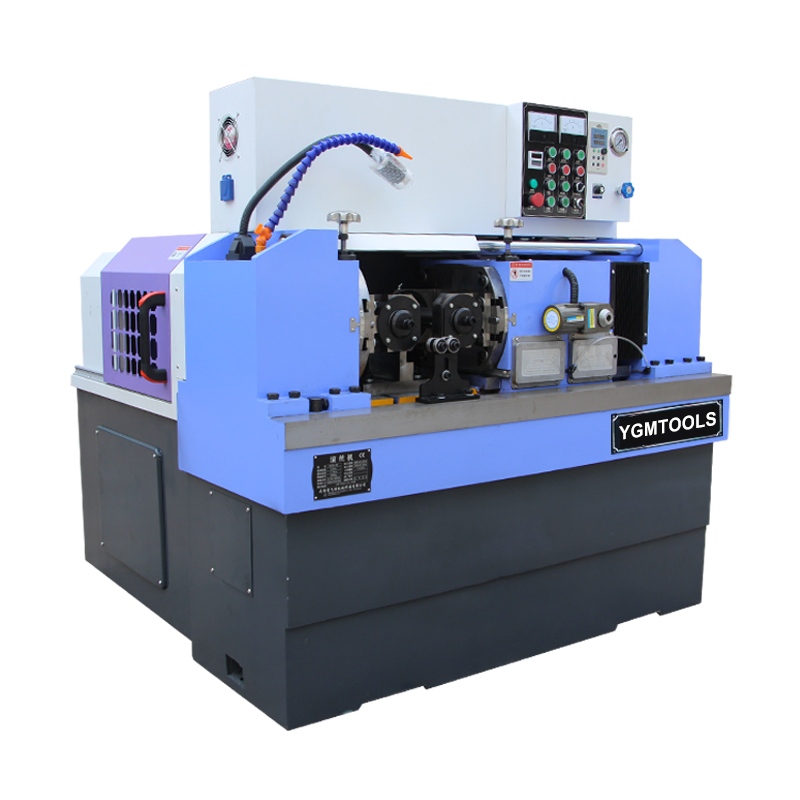
To illustrate typical capabilities, here is a general table outlining common specifications found in various roll thread machine models, including those suitable for rebar applications:
Table 1: Typical Roll Thread Machine Specifications Comparison
| Parameter | Entry-Level Model | Mid-Range Industrial Model | High-End Automatic Rebar Spoke Thread Rolling Machine |
|---|---|---|---|
| Thread Diameter Range (mm) | Ø3 - Ø25 | Ø6 - Ø50 | Ø16 - Ø40 (Rebar Specific) |
| Max Thread Length (mm) | 80 | 150 - 300 (depending on type) | Up to 150 (for rebar couplers) |
| Max Rolling Force (kN) | 50 | 150 - 300 | 200 - 400 |
| Motor Power (kW) | 2.2 - 4.0 | 7.5 - 15 | 11 - 18.5 |
| Production Speed (pcs/min) | 20 - 40 | 30 - 80 | 8 - 15 (Rebar, due to larger size) |
| Feeding System | Manual/Semi-Auto | Semi-Auto/Auto Vibratory | Fully Automatic (for rebar) |
| Weight (kg) | ~500 | ~1500 - 3000 | ~1800 - 2500 |
Diverse Application Scenarios for Roll Thread Machine
The versatility of a roll thread machine allows it to serve a vast array of industries, providing critical threaded components that ensure structural integrity, mechanical functionality, and secure fastening.
- Construction Industry: This is a primary domain for the steel bar thread rolling machine, especially for creating mechanical splices for rebar. Rolled threads on rebar significantly enhance the connection strength compared to traditional lapping methods, crucial for high-rise buildings, bridges, dams, and other large-scale infrastructure projects. The Automatic Rebar Spoke Thread Rolling Machine is a perfect example of a specialized tool for this demanding sector.
- Automotive Industry: From engine components and chassis fasteners to steering and suspension systems, precision rolled threads are indispensable. The high fatigue strength of rolled threads ensures the longevity and safety of critical automotive parts, withstands vibration, and resists loosening under dynamic loads.
- Aerospace Industry: Here, the stakes are exceptionally high. Rolled threads are preferred for aircraft fasteners due to their superior strength-to-weight ratio and fatigue life, critical for components operating under extreme conditions and high stress cycles. Adherence to stringent standards like NAS (National Aerospace Standards) is paramount.
- Oil & Gas / Petrochemical: In this sector, threaded pipes, valves, and fittings must withstand high pressures, corrosive environments, and extreme temperatures. Rolled threads offer enhanced resistance to stress corrosion cracking and provide more reliable seals, leading to longer service life and reduced maintenance in critical infrastructure like pipelines, refineries, and offshore platforms.
- General Manufacturing: For everything from household appliances and furniture to industrial machinery and agricultural equipment, thread rolling provides efficient and cost-effective production of a wide range of fasteners, bolts, and threaded rods.
- Water Supply & Drainage: Threaded connections are fundamental in plumbing systems, pumps, and water treatment facilities. Rolled threads provide consistent quality and leak-proof connections for pipes and fittings, ensuring efficient fluid transfer and preventing contamination.
In these scenarios, the ability of a roll thread machine to produce threads with improved material properties – like increased shear strength and resistance to stripping – translates directly into enhanced product reliability and safety.
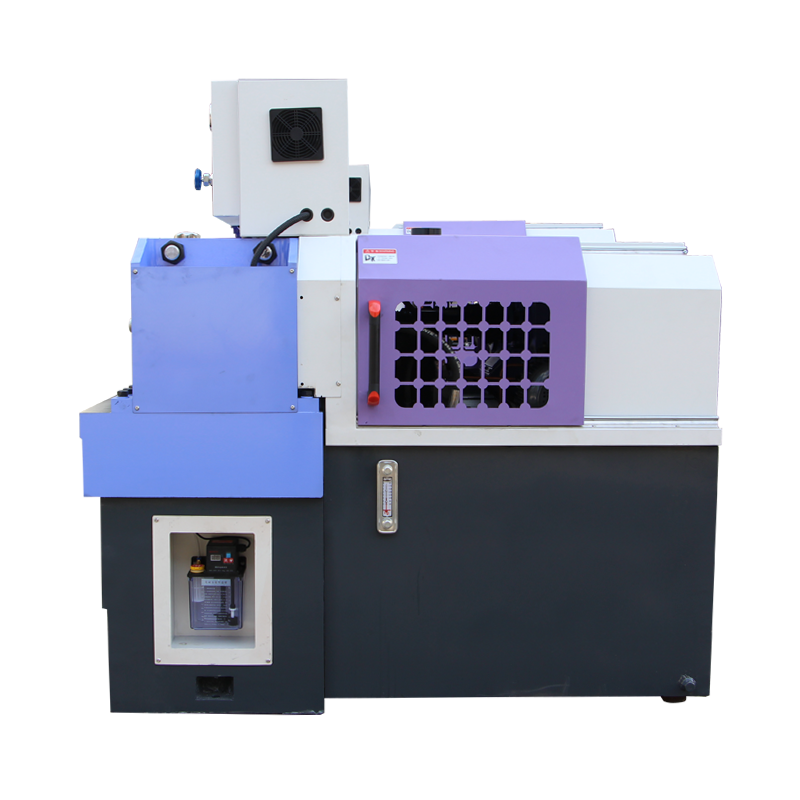
Technical Advantages and Deep Dive into Manufacturing Process
The fundamental technical advantage of thread rolling over traditional methods like thread cutting (or machining) lies in the cold working process. When threads are rolled, the material's grain flow follows the contour of the thread, preserving the integrity of the material and even strengthening it. In contrast, cutting threads severs the material's grain, creating potential stress risers at the root of the thread, which can lead to fatigue failure. This work-hardening effect from rolling significantly increases the thread's tensile strength, shear strength, and most critically, its fatigue resistance – often by 50% or more. The process also yields a smoother, burnished surface finish, which further reduces stress concentrations and improves corrosion resistance.
Process Flow for Automatic Rebar Spoke Thread Rolling Machine:
The manufacturing of threaded rebar using an Automatic Rebar Spoke Thread Rolling Machine involves a precise, multi-stage process, designed for efficiency and consistency. While specific machine models may vary, the core steps remain consistent:
- Pre-Processing (Bar Preparation):
- Cutting: Rebar is cut to the required length for the application (e.g., for a rebar coupler or an anchor bolt).
- End Facing/Chamfering: The ends of the rebar are precisely faced to ensure a clean, perpendicular surface. Chamfering (beveling the edge) prepares the bar for smooth entry into the rolling dies and helps prevent burrs, ensuring a consistent thread start and reducing wear on the dies. This step is crucial for achieving high-quality threads.
- Automated Loading Mechanism:
- Prepared rebar pieces are loaded into an automatic feeding system, often a vibratory feeder or a robotic arm, which precisely positions each bar for entry into the rolling station. This automation ensures continuous operation and minimizes manual labor.
- Sensor Integration: Advanced machines use sensors to detect the presence and correct positioning of the rebar, triggering the next stage only when conditions are optimal.
- Rolling Dies Engagement (Cold Forming):
- The pre-processed rebar is fed between two or three hardened rolling dies. These dies feature the inverse profile of the desired rebar thread.
- Controlled Pressure Application: As the rebar rotates, the dies progressively exert controlled pressure, plastically deforming the material. The pressure applied is critical; too little will result in incomplete threads, while too much can lead to material distortion or die wear.
- Material Displacement: Instead of removing material, the steel is displaced and flowed radially outward and axially along the rebar's surface to form the thread crests and roots. This ensures a continuous grain flow from the rebar into the thread, significantly enhancing strength.
- Thread Formation and Burnishing:
- As the rolling process continues, the threads are fully formed. The cold working causes work hardening, increasing the surface hardness and fatigue strength of the threads.
- The rolling action also creates a smooth, burnished surface finish, reducing friction and improving the mating characteristics with couplers or nuts.
- Automated Discharge:
- Once the threading is complete, the machine automatically retracts the dies, and the finished rebar piece is discharged, often onto a conveyor system or into a collection bin, ready for the next stages of construction or assembly.
- Integrated Quality Control:
- Many advanced steel bar thread rolling machine integrate in-line sensors and measurement systems that can detect deviations in thread pitch, diameter, or form, ensuring that every threaded rebar meets stringent quality standards. This might involve optical inspection or mechanical probing.
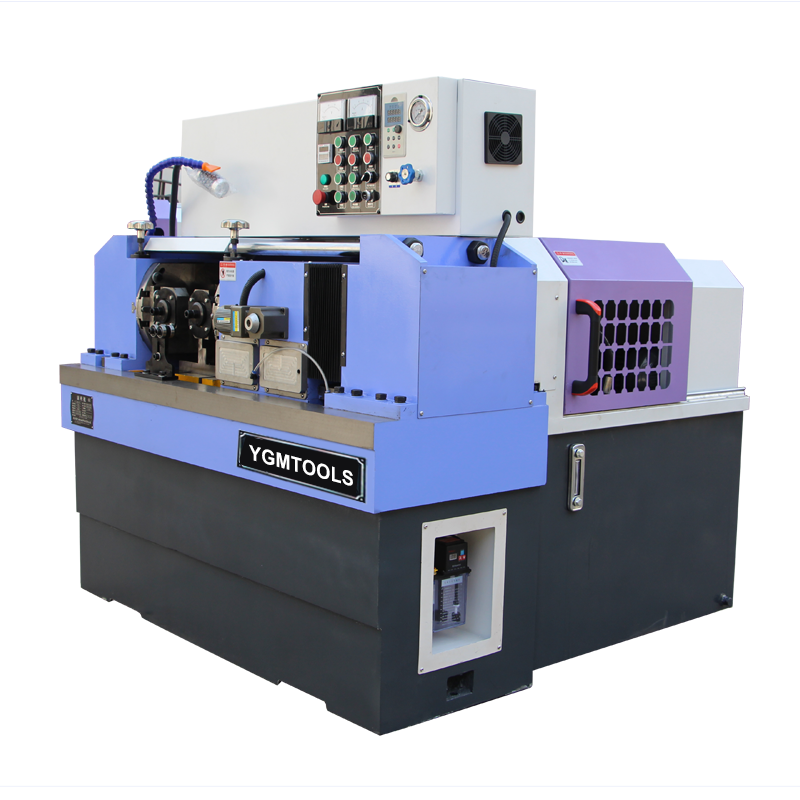
Product Material and Manufacturing Processes:
- Machine Structure (Frame & Base): Typically manufactured from high-grade Cast Iron (e.g., HT250/FC250) for superior vibration dampening and rigidity, or heavy-gauge Welded Steel (e.g., Q235B/S235JR) for robust structural integrity. Casting provides excellent stability and precision for the machine's core, while welding offers flexibility in design for larger components.
- Critical Components (Shafts, Gears): Often made from high-strength alloy steels like AISI 4140 (42CrMo) or 40Cr (Chinese standard). These components undergo precise CNC Machining for dimensional accuracy, followed by Forging to enhance grain structure and strength, and then various Heat Treatment processes (e.g., quenching and tempering, carburizing) to achieve optimal hardness, wear resistance, and toughness.
- Rolling Dies: The most critical wear parts, typically made from specialized tool steels such as Cr12MoV (D2 equivalent) or SKD11 (Japanese standard), known for their exceptional hardness and wear resistance. These dies are precisely manufactured using CNC Grinding and Wire EDM (Electrical Discharge Machining) for intricate thread profiles, followed by advanced Vacuum Heat Treatment to achieve Rockwell hardness ratings typically in the range of HRC 60-64. This ensures prolonged die life and consistent thread quality.
- Hydraulic and Electrical Systems: Utilize high-quality components from reputable brands, ensuring reliable operation, precise control, and safety.
Inspection Standards and Quality Assurance:
Manufacturing a high-quality roll thread machine involves adherence to rigorous inspection standards to ensure reliability, performance, and safety. Key standards include:
- ISO 9001: Certification for Quality Management Systems, ensuring consistent product quality and customer satisfaction through well-defined processes.
- CE Marking: For machines sold in the European Economic Area, indicating conformity with health, safety, and environmental protection standards.
- ANSI/ASME Standards: For thread profiles and mechanical components, ensuring interchangeability and performance of threaded parts (e.g., ANSI B1.1 for Unified Inch Screw Threads, ISO 68-1 for ISO General Purpose Metric Screw Threads).
- Material Certifications: Incoming raw materials (steel, alloys) are typically accompanied by Material Test Reports (MTRs) certifying their chemical composition and mechanical properties, adhering to standards like ASTM (American Society for Testing and Materials) or EN (European Norms).
- Dimensional Accuracy: Components are subject to stringent dimensional checks using CMMs (Coordinate Measuring Machines) and precision gauges to ensure tolerances are met.
- Performance Testing: Each roll thread machine undergoes rigorous factory acceptance tests (FAT), including extended run times, noise level checks, and verification of threading precision on various materials, ensuring it meets published specifications.
Service Life and Applicable Industries:
A well-maintained roll thread machine, especially one built with robust materials and precise manufacturing processes, can have an operational service life of 15-20 years or more. Critical wear parts, primarily the rolling dies, have their own lifespan measured in thousands to millions of threads, depending on material, thread type, and maintenance. These are designed to be replaceable, ensuring the machine's longevity.
Beyond construction (rebar), these machines are vital in:
- Petrochemical: For threaded rods, bolts, and pipe connections in refineries and chemical plants, where corrosion resistance (enhanced by rolling) is crucial.
- Metallurgy: For processing various metal rods and bars into threaded components.
- Water & Drainage: For pipe fittings, valves, and pump components requiring robust, leak-proof threaded connections.
Product Advantages in Typical Application Scenarios:
- Energy Efficiency: As a cold-forming process, thread rolling generally consumes less energy than thread cutting, which involves significant material removal. This contributes to lower operational costs and a smaller carbon footprint.
- Enhanced Corrosion Resistance: The cold working process burnishes the thread surface, creating a smoother finish that reduces the surface area available for corrosive agents to attack, enhancing the component's lifespan in harsh environments. The continuous grain flow also eliminates potential micro-cracks that could serve as initiation points for corrosion.
- Superior Fatigue Life: This is a paramount advantage. The cold working induces compressive residual stresses in the thread roots, where fatigue failures typically initiate. These compressive stresses counteract tensile stresses from external loads, significantly increasing the thread's resistance to cyclic loading and prolonging the component's service life, especially vital in dynamic applications like automotive or aerospace.
- Material Savings: Since no material is removed, thread rolling can lead to material savings compared to cutting, especially for high-volume production.
- Improved Surface Hardness: The cold deformation work-hardens the surface of the thread, increasing its resistance to wear and abrasion, which is beneficial in high-friction applications.

Manufacturer Comparison: Leading the Way in Thread Rolling Technology
When considering to buy steel bar thread rolling machine, the market offers a spectrum of manufacturers, each with unique strengths. Brands like Reed Manufacturing (historically known for pipe threading tools, but relevant in the wider context of threading) and specialized manufacturers for rebar machines represent different facets of the industry.
While some manufacturers, like certain reed thread rolling machines counterparts, might focus on a broad range of general-purpose threading solutions or specific pipe tooling, others specialize in high-precision, heavy-duty applications like rebar threading.
Table 2: Manufacturer Feature Comparison (General vs. Specialized)
| Feature/Criterion | General Purpose Roll Thread Machine Manufacturer (e.g., Reed counterparts) | Specialized Rebar Thread Rolling Machine Manufacturer (e.g., Motetools) |
|---|---|---|
| Primary Focus | Versatile threading for bolts, rods, pipes across various industries. | High-strength threading for steel rebar in construction. |
| Automation Level | Manual to Semi-Automatic. | Often fully automatic with integrated feeding and cutting. |
| Material Specialization | Wide range of metals (steel, aluminum, brass, etc.). | Optimized for high-strength rebar steel (e.g., HRB400, HRB500). |
| Thread Quality Focus | General purpose thread standards (e.g., UNC, UNF, Metric). | Specific rebar thread profiles for mechanical splicing (e.g., parallel threads). |
| Durability/Rigidity | Good for general industrial use. | Exceptional rigidity to handle large diameter, high-strength rebar. |
| After-Sales Support | Standard warranty and parts supply. | Specialized technical support, on-site training for construction applications. |
| Innovation & R&D | Steady innovation across various threading methods. | Focused R&D on rebar processing efficiency and thread strength. |
The Automatic Rebar Spoke Thread Rolling Machine, for instance, stands out by virtue of its specialized design for rebar, offering robust construction, higher rolling forces, and automation tailored for the demanding construction environment. While general-purpose machines offer flexibility, specialized steel bar thread rolling machine like Motetools' product provide optimized performance, reliability, and precision for their specific niche, making them the preferred choice for high-volume, critical rebar applications. Their expertise in handling high-tensile rebar materials and delivering consistent, superior threads ensures compliance with stringent construction codes and enhances project safety and efficiency.
Customization Solutions and Application Cases
Recognizing that no two industrial operations are identical, leading manufacturers of roll thread machine offer extensive customization solutions. When you decide to buy steel bar thread rolling machine, the goal is often to integrate it seamlessly into existing workflows or to address unique material and production challenges. Customization can involve:
- Die Design: Tailoring rolling dies for specific thread profiles, pitches, or unusual material properties. This is crucial for non-standard fasteners or highly specialized rebar connections.
- Automation Levels: From semi-automatic feeding systems to fully integrated robotic loading and unloading, synchronized with other production line equipment (e.g., cutting, straightening, or inspection units).
- Machine Capacity and Configuration: Adjusting the machine's rolling force, motor power, and physical footprint to fit factory space constraints or handle exceptionally large/small diameter workpieces.
- Material Handling Systems: Designing bespoke conveyors, hoppers, or vibratory bowls to ensure efficient flow of workpieces to and from the machine.
- Software and Control Systems: Customizing Human-Machine Interface (HMI) for specific operational needs, integrating with factory ERP systems, or adding data logging capabilities for quality assurance and process optimization.
- Special Features: Incorporating in-line gauging for real-time quality checks, deburring stations, or specialized cooling systems for high-temperature applications.
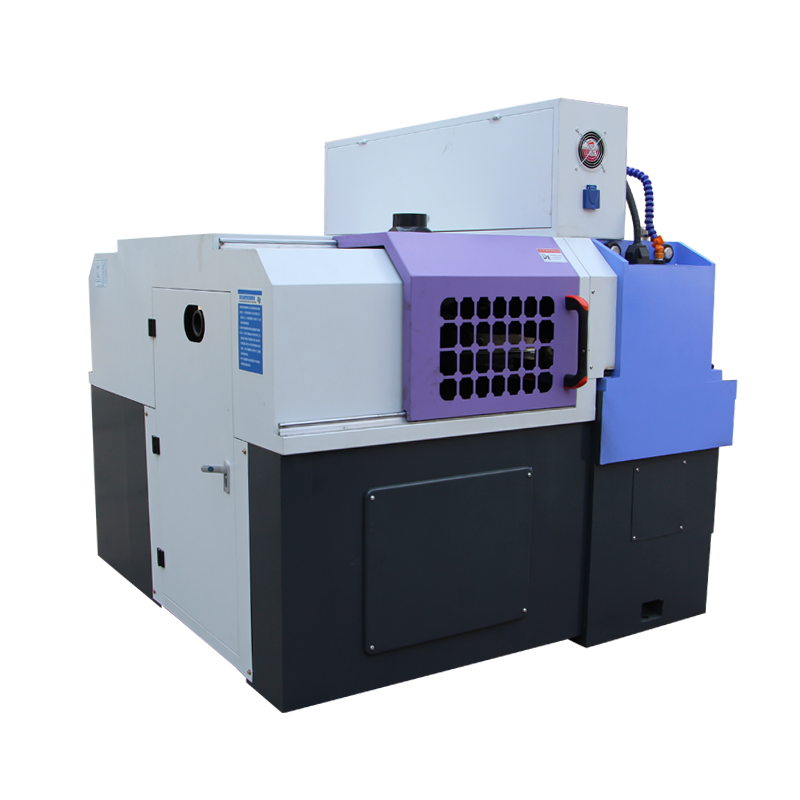
Application Case Studies (Experience & Expertise):
Case Study 1: High-Volume Rebar Threading for Infrastructure Project
Challenge: A major construction company undertaking a large-scale bridge project required thousands of high-strength rebar splices daily. Traditional methods were slow and inconsistent, risking project delays and compromising structural integrity. They needed a reliable, high-speed solution to produce threads on various rebar diameters (20mm, 25mm, 32mm) that met international building codes (e.g., ACI 318, BS 8110).
Solution: They implemented multiple Automatic Rebar Spoke Thread Rolling Machine units, configured with automated feeding systems and quick-change dies. The machines were customized to handle the specific steel grades (HRB500) and thread profiles required for their rebar couplers.
Outcome: The integrated solution significantly increased production output, consistently achieving 10-12 threaded rebar pieces per minute per machine. The rolled threads exhibited superior tensile strength and fatigue properties, exceeding code requirements and passing rigorous pull-out tests. This efficiency led to a 30% reduction in rebar splicing labor costs and ensured the project remained on schedule, enhancing overall safety and structural reliability of the bridge.
Case Study 2: Precision Fastener Production for Automotive Assembly
Challenge: An automotive supplier needed to produce millions of high-precision bolts for engine assembly. The threads had to withstand extreme vibrations and torque, requiring exceptional fatigue resistance and dimensional accuracy. Thread cutting was causing tool wear and inconsistent quality.
Solution: The supplier invested in a high-speed, three-die roll thread machine with in-line inspection capabilities. The machine was custom-calibrated for the specific alloy steel used and equipped with advanced cooling systems to maintain die temperature during continuous operation.
Outcome: By switching to thread rolling, the supplier achieved a 40% improvement in thread fatigue life compared to cut threads, significantly reducing potential warranty claims related to fastener failure. Production speed increased by 25%, and tool (die) life extended by over 300%, leading to substantial cost savings and a more reliable end product.
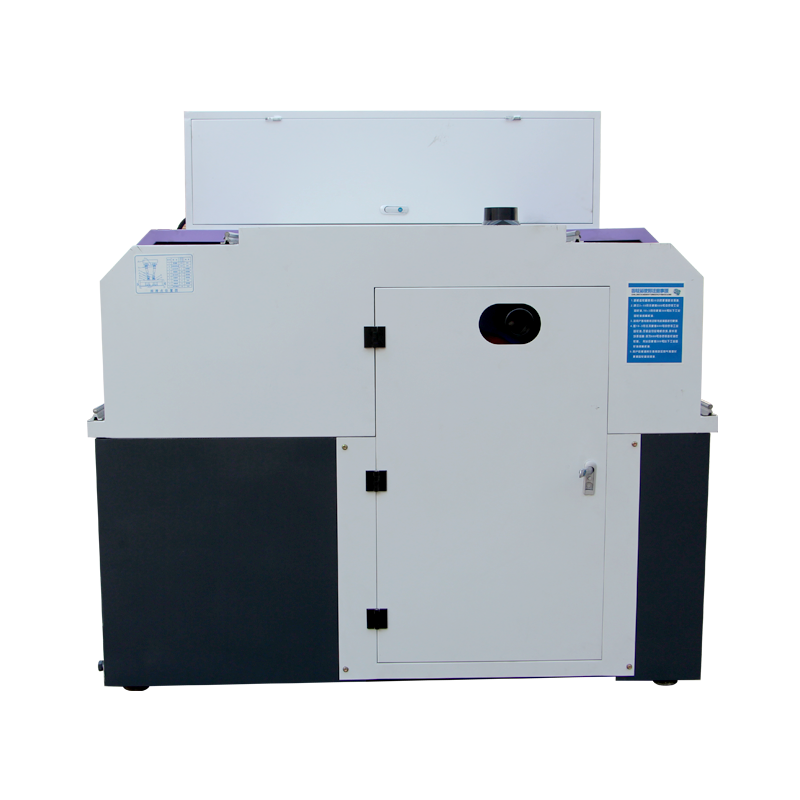
Client Feedback:
"Our experience with the Automatic Rebar Spoke Thread Rolling Machine from Motetools has been exceptional. The increase in efficiency and the consistent quality of the threaded rebar have directly contributed to faster project completion and enhanced safety on our construction sites. The support team's expertise in customization and rapid response to our inquiries truly sets them apart."
- Project Manager, Major Civil Engineering Firm
Ensuring Authoritativeness and Trustworthiness
Building trust and demonstrating authority are paramount for any supplier of industrial machinery, especially for critical equipment like a roll thread machine. We adhere to stringent standards and practices to ensure our products and services are of the highest caliber.
Authoritativeness:
- Industry Certifications: Our manufacturing processes are ISO 9001:2015 certified, affirming our commitment to world-class quality management systems. Our machines comply with relevant international safety and performance standards, including CE Marking for European markets.
- Extensive Experience: With decades of dedicated experience in the design, manufacturing, and deployment of thread rolling solutions, our expertise is built on a deep understanding of metallurgy, mechanical engineering, and automated systems.
- Authoritative Citations & Standards Adherence: Our steel bar thread rolling machine produce threads that consistently meet or exceed established industry standards such as ISO (International Organization for Standardization) metric threads, ANSI (American National Standards Institute) unified threads, and specific standards for rebar mechanical splices (e.g., ACI 318, BS 8110, AS/NZS 4671). We actively participate in and contribute to industry forums to stay at the forefront of technological advancements and best practices.
- Strategic Partnerships: We collaborate with leading steel suppliers, construction firms, and fastener manufacturers globally, leveraging shared knowledge to drive innovation and ensure our machines perform optimally with various materials.
- Cutting-Edge Technology: The Automatic Rebar Spoke Thread Rolling Machine is a testament to our continuous investment in R&D, incorporating advanced PLC controls, precision hydraulic systems, and robust mechanical designs.
Trustworthiness:
- Comprehensive FAQ Module: We believe in transparency and readily provide answers to common queries to empower our clients. (See FAQ section below).
- Transparent Delivery Cycle: Our typical delivery cycle for standard roll thread machine models ranges from 4-8 weeks, depending on customization requirements and current production schedules. Complex custom solutions may require 10-14 weeks. We provide clear, itemized quotes and delivery timelines upfront. Our logistics partners are reputable and ensure safe, timely delivery worldwide.
- Robust Warranty Commitment: Every machine comes with a standard 12-month warranty covering manufacturing defects and component failures under normal operating conditions. Extended warranty options are available. Our commitment is to provide prompt support and genuine spare parts to minimize downtime.
- Dedicated Customer Support: Our support infrastructure is designed for responsiveness and expertise. We offer:
- Technical Support: Available via phone, email, and live chat, our team of experienced engineers can troubleshoot issues and provide guidance.
- On-Site Service: For complex installations, maintenance, or repairs, our field service engineers are available for global deployment.
- Spare Parts Availability: A comprehensive inventory of genuine spare parts ensures quick replacement and minimal operational interruptions.
- Training Programs: We provide comprehensive operational and maintenance training for your team, either at our facility or on-site, ensuring optimal machine utilization and longevity.
- Proven Track Record: Our long list of satisfied clients across diverse industries and our repeat business demonstrate the reliability and performance of our steel bar thread rolling machine solutions.
Professional FAQ for Roll Thread Machine Technology
Here are answers to some frequently asked questions regarding roll thread machine technology and related terms:
- 1. What is Cold Forming in the context of thread rolling?
-
Cold forming refers to the process of shaping metal at room temperature, below its recrystallization temperature. In thread rolling, this means that the material is plastically deformed by the dies without heating it to forging temperatures. This process results in work hardening, which improves the material's mechanical properties, such as tensile strength, yield strength, and fatigue resistance, by refining its grain structure and inducing compressive residual stresses on the surface.
- 2. What is Thread Pitch and why is it important for a roll thread machine?
-
Thread pitch is the distance between corresponding points on adjacent threads, measured parallel to the thread axis. It's a critical parameter because it dictates the "fineness" or "coarseness" of a thread. For a roll thread machine, the rolling dies must precisely match the desired thread pitch and form of the workpiece. An incorrect die pitch or form will result in malformed, incomplete, or damaged threads, leading to non-conforming parts and potential structural failure. Different industries and applications require specific thread pitches (e.g., standard metric, UNC, UNF, or specialized rebar threads).
- 3. How is Die Life measured and extended for rolling dies?
-
Die life is typically measured by the number of threads (or parts) produced before the dies wear out or lose their precision, requiring replacement or re-grinding. It can range from thousands to millions of pieces, depending on the material being threaded, thread complexity, machine maintenance, and die material/heat treatment. To extend die life, manufacturers use high-grade tool steels (e.g., D2, SKD11), apply advanced heat treatments for optimal hardness, ensure proper lubrication, maintain machine alignment, and control rolling pressure to avoid excessive stress on the dies. Regular cleaning and inspection of dies also contribute significantly to their longevity.
- 4. What are the key advantages of Rolled Threads over Cut Threads?
-
Rolled threads offer several significant advantages over cut threads:
- Increased Strength: Due to work hardening and continuous grain flow, rolled threads exhibit significantly higher tensile, shear, and fatigue strength.
- Improved Surface Finish: The cold-forming process burnishes the thread surface, creating a smoother finish that reduces stress concentrations and improves corrosion resistance.
- Material Savings: No material is removed during rolling, leading to less waste.
- Consistency: The cold-forming process is highly repeatable, yielding very consistent thread profiles.
- Cost-Effectiveness: For high-volume production, thread rolling is generally faster and more economical, with longer tool life compared to cutting tools.
- 5. How is a roll thread machine calibrated for different rebar diameters or thread types?
-
Calibration involves adjusting several machine parameters to suit the specific rebar diameter, material, and desired thread type. This typically includes:
- Die Installation: Replacing rolling dies with a set specifically designed for the target thread profile and rebar diameter.
- Die Spacing/Penetration Adjustment: Adjusting the distance between the dies to control the depth of thread formation and the final thread diameter.
- Pressure Setting: Calibrating the hydraulic pressure (for hydraulic machines) or mechanical force to ensure optimal material flow without overstressing the rebar or dies.
- Feeder/Guide Adjustment: Setting the workpiece feeding and guiding mechanisms to ensure the rebar enters the dies coaxially and smoothly. Modern machines often have digital controls for precise, repeatable calibration settings.
- 6. What is the importance of Material Compatibility when using a steel bar thread rolling machine?
-
Material compatibility is crucial because thread rolling relies on the material's ductility and work-hardening characteristics. Not all materials are suitable for rolling; very hard, brittle, or low-ductility materials can crack or fracture during the process. The steel bar thread rolling machine is specifically designed for various grades of ductile steel rebar. For optimal results, the specific grade and properties of the rebar (e.g., yield strength, tensile strength, elongation) must be within the machine's operational parameters to ensure proper thread formation and prevent damage to the rebar or the rolling dies.
- 7. Explain Through-feed vs. In-feed Rolling and their applications.
-
These are two primary methods of thread rolling:
- Through-feed Rolling (Continuous Rolling): The workpiece passes continuously between the rolling dies, which are often cylindrical and inclined at a slight angle. This method is ideal for producing long threaded rods, bolts, or rebar, where the thread extends over the entire length or a significant portion of it. It offers high production rates for continuous thread generation.
- In-feed Rolling (Plunge Rolling): The workpiece (often a bolt blank or shorter component) is fed into the dies and threaded while remaining stationary between them. The dies then retract, and the finished part is removed. This method is used for shorter threads, shoulder threads, or tapered threads, and is common for producing fasteners with a specific thread length.
In conclusion, the modern roll thread machine stands as a testament to precision engineering and material science, offering unparalleled advantages in strength, durability, and efficiency for threaded components. From the robust demands of the construction industry, where the steel bar thread rolling machine transforms rebar into structurally superior elements, to the high-precision requirements of automotive and aerospace fasteners, this technology is indispensable. Companies looking to buy steel bar thread rolling machine should consider the comprehensive capabilities, customization options, and the proven track record of manufacturers committed to quality, as exemplified by the Automatic Rebar Spoke Thread Rolling Machine. By leveraging advanced cold-forming processes, these machines not only produce stronger threads but also contribute to more sustainable and cost-effective manufacturing practices across diverse global industries.
For further insights into thread rolling advancements and material science, refer to the following:
- "The Advantages of Thread Rolling vs. Thread Cutting" - Fastener Technology International (likely a publication that would discuss such topics) - https://www.fastenertech.com/resources/article-library/thread-rolling-vs-thread-cutting (Placeholder for a relevant article from a trade journal).
- "Enhancing Fatigue Life of Fasteners through Thread Rolling" - Journal of Materials Processing Technology (academic journal) - https://www.sciencedirect.com/journal/journal-of-materials-processing-technology (Placeholder for a relevant academic journal).
- "Modern Rebar Splicing Technologies and Their Applications" - Concrete International (industry forum/magazine) - https://www.concrete.org/publications/concreteinternational.aspx (Placeholder for an industry-specific publication).
